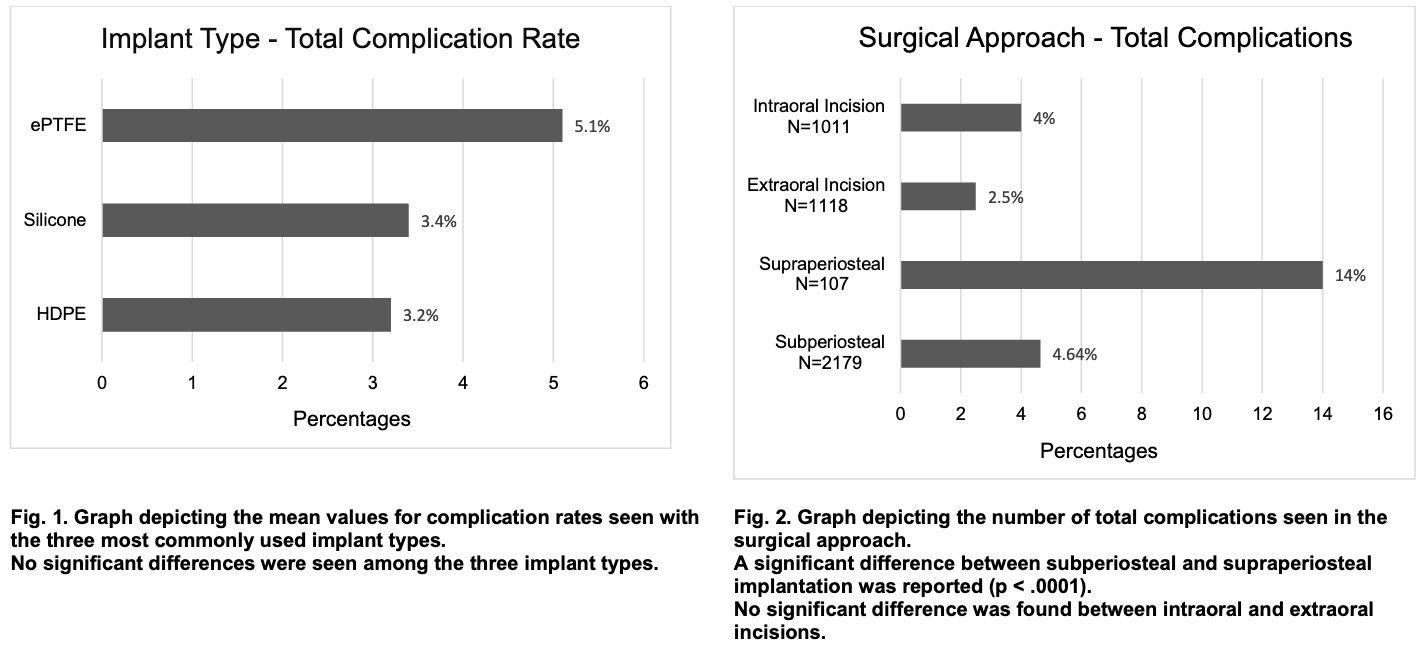Comparing Alloplastic Materials Used in Chin Augmentation: A Systematic Review and Analysis
Christopher D. Liao MD1,2, Ezequiel Rodriguez BS3, Kelley Zhao BS4, Annet Kuruvilla BS4, Nicholas Kunda MD1,2, Finny George MD2
1Division of Plastic and Reconstructive Surgery, Stony Brook Medicine, Stony Brook, NY. 2Long Island Plastic Surgical Group PC, Garden City, NY. 3St. George's University School of Medicine, Great River, NY. 4Renaissance School of Medicine at Stony Brook University, Stony Brook, NY
Background: Implantation of alloplastic materials has become the preferred method for primary chin augmentations. Given the diversity of implant materials, a systematic review was performed to compare complication profiles and outcomes to determine the optimal chin augmentation material.
Methods: The PubMed database was queried on March 14, 2021. We included all studies on patients who underwent alloplastic chin augmentation without any additional chin procedures such as osseous genioplasties, fat or bone grafting, and filler administration. Documented complications included aesthetic dissatisfaction, malposition, infection, extrusion, revisions, and removal.
Results: We evaluated 39 articles yielding >3,104 patients (average follow-up 43.9 months ranging from 2 weeks to 15 years) and 12 categories of implants. Study designs included 2 case reports, 32 case series, and 5 retrospective cohort/comparative studies. The average ASPS level of evidence was 3.81 ± 0.76. The three implant materials with the largest study numbers were silicone (7), MedPor (16), and Gore-Tex (4). Among all reviewed implants, hard tissue replacement (HTR) polymer demonstrated the highest total complication rate (11.1%, n = 27). Silicone implants had the largest sample size (n = 825) and demonstrated a significantly lower rate of aesthetic dissatisfaction (0.3%) compared to MedPor (n = 435; 1.9%, p < .01) and Gore-Tex (n = 387; 2.3%, p < .001). Gore-Tex demonstrated higher total complication rates (5.1%) compared to silicone implants (3.4%, p < .01); furthermore, there was no difference in total complication rates between Gore-Tex and MedPor (3.2%, p = .1726). Other reviewed implants included Mersilene mesh, Proplast II, and polypropylene mesh, although analysis was limited by low study numbers. A surgical approach using an intraoral incision had a complication rate of 4.0% across 16 studies (n = 1,011), which was not statistically different compared to the complication rate following an extraoral incision (2.5% across 13 studies, n = 1,118; p = .0571). Subperiosteal implantations had a lower complication rate (4.01%, n = 2,519) compared to supraperiosteal implantations (14.0%, n = 107; p < .0001).
Conclusions: Overall complications following primary chin augmentation are rare with clinically insignificant differences in complication rates among silicone, MedPor, and Gore-Tex. This review suggests that equivalent patient satisfaction and outcomes can be achieved using any of these materials for alloplastic chin augmentation, and surgical technique may be more important than implant selection with regards to patient outcomes.
Back to 2022 Abstracts

